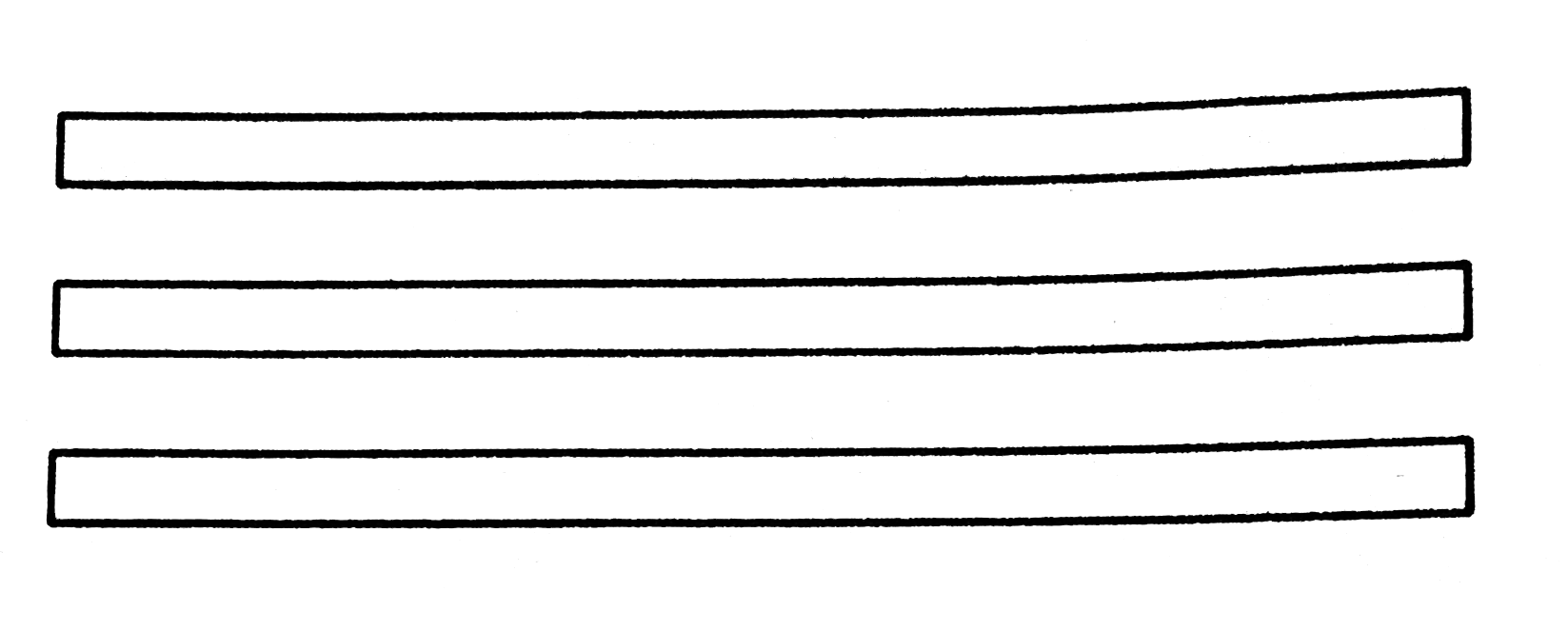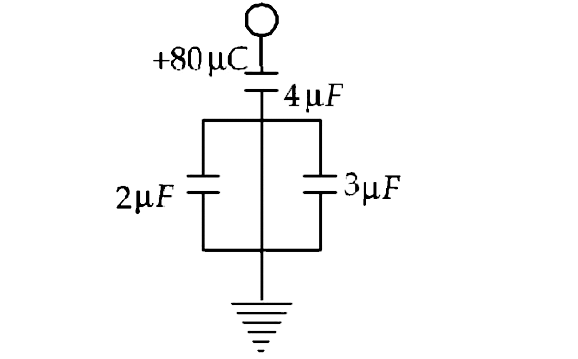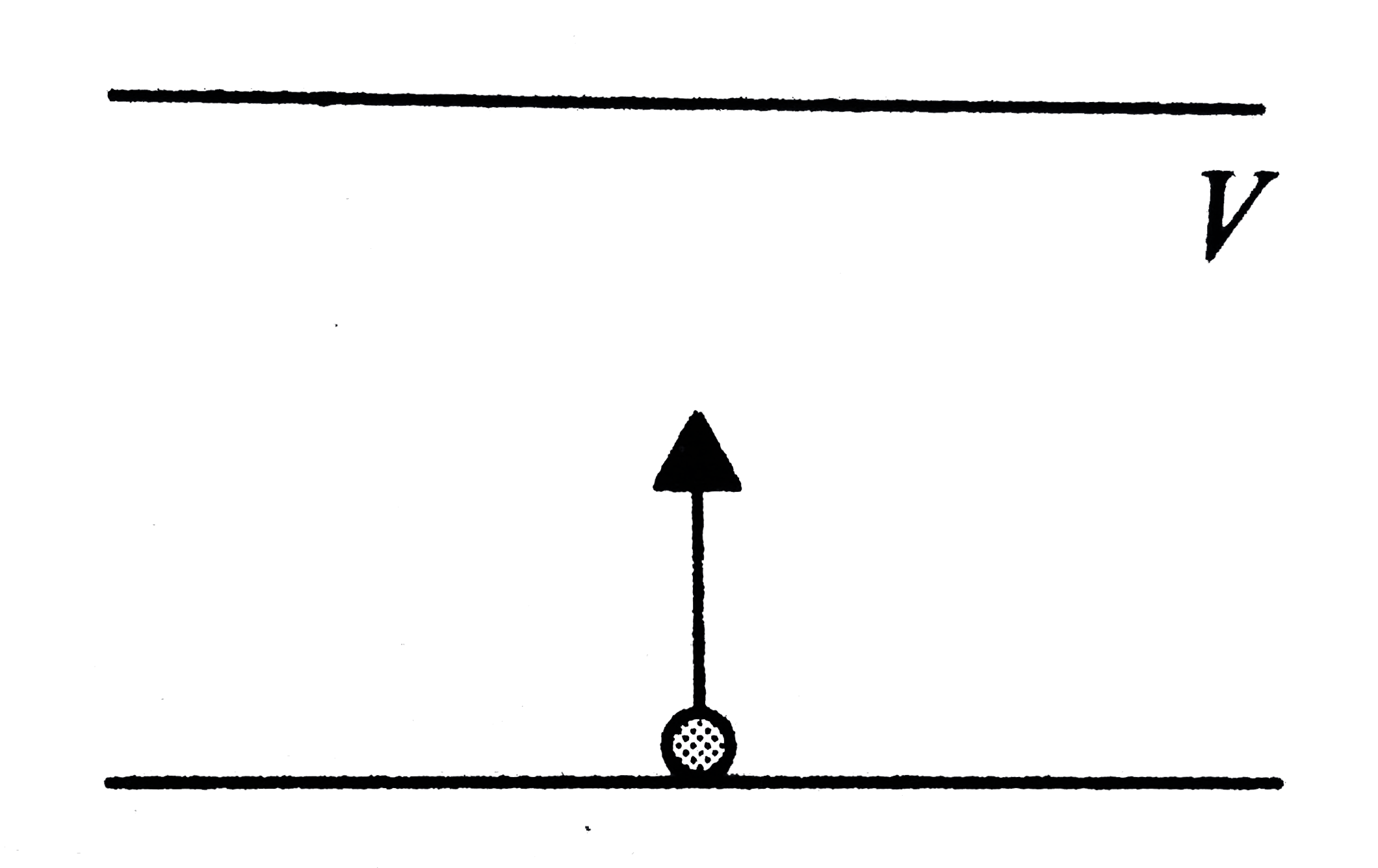Consider the situation of the given figure . If 1.0μC is placed on the upper plate , what will be the potential difference between (a ) the upper and middle plates and (b ) the middle and the lower plate? If capacitance of each capacitor is 50 nF.
To solve the problem step by step, we need to find the potential differences between the plates of a capacitor system when a charge of 1.0μC is placed on the upper plate. The capacitance of each capacitor is given as 50nF.
Step 1: Understand the Charge Distribution
When 1.0μC is placed on the upper plate, the charge distribution on the plates will be as follows:
- The upper plate will have a charge of +1.0μC.
- The middle plate will have a charge of 0μC initially, but due to the influence of the upper plate, it will acquire a charge of −0.5μC on its inner surface and +0.5μC on its outer surface.
- The lower plate will also have a charge of 0μC initially, but it will acquire a charge of −0.5μC on its inner surface and +0.5μC on its outer surface.
Step 2: Calculate the Potential Difference Between Upper and Middle Plates
To find the potential difference V1 between the upper and middle plates, we use the formula:
V=QC
where Q is the charge on the inner surface of the middle plate and C is the capacitance.
Here, Q=0.5μC=0.5×10−6C and C=50nF=50×10−9F.
Calculating V1:
V1=0.5×10−650×10−9=0.550×103=10V
Step 3: Calculate the Potential Difference Between Middle and Lower Plates
The potential difference V2 between the middle and lower plates can be calculated similarly. The charge on the inner surface of the lower plate is also 0.5μC.
Using the same formula:
V2=0.5×10−650×10−9=10V
Final Answers
(a) The potential difference between the upper and middle plates is 10V.
(b) The potential difference between the middle and lower plates is also 10V.
When 1.0μC is placed on the upper plate, the charge distribution on the plates will be as follows:
- The upper plate will have a charge of +1.0μC.
- The middle plate will have a charge of 0μC initially, but due to the influence of the upper plate, it will acquire a charge of −0.5μC on its inner surface and +0.5μC on its outer surface.
- The lower plate will also have a charge of 0μC initially, but it will acquire a charge of −0.5μC on its inner surface and +0.5μC on its outer surface.
To find the potential difference V1 between the upper and middle plates, we use the formula:
V=QC
where Q is the charge on the inner surface of the middle plate and C is the capacitance.
V1=0.5×10−650×10−9=0.550×103=10V
The potential difference V2 between the middle and lower plates can be calculated similarly. The charge on the inner surface of the lower plate is also 0.5μC.
V2=0.5×10−650×10−9=10V
(a) The potential difference between the upper and middle plates is 10V.
Topper's Solved these Questions
- BOOK - HC VERMA ENGLISHCHAPTER - CAPACITORSEXERCISE - short answer7videos
CAPACITORS
- BOOK - HC VERMA ENGLISHCHAPTER - CAPACITORSEXERCISE - OBJECTIVE 26videos
CAPACITORS
- BOOK - HC VERMA ENGLISHCHAPTER - BOHR'S MODEL AND PHYSICS OF THE ATOMEXERCISE - Short Answer10videos
BOHR'S MODEL AND PHYSICS OF THE ATOM
- BOOK - HC VERMA ENGLISHCHAPTER - DISPERSION AND SPECTRAEXERCISE - Question for short Answer6videos
DISPERSION AND SPECTRA
Similar Questions
Consider the arrangement of parallel plates of the previous problem. If 1.0 nC charge is given to the upper plate instead of the middle, what will be the potential difference (in V) between (a) the upper and the middle plates and (b) the middle and the lower plates ? If Capacitance of each plate is 50 nF .
View SolutionThe capacitance between the adjacent plates shown in figure (31-E20 ) is 50nF . A charge of 1.0μCis placed on the middle plate (a )What will be the charge on the outer surface pf the upper plate ? (b ) Find the potential difference developed between the upper and the middle plates .
 View Solution
View SolutionIn the given circuit, a charge of +80μC is given to the upper plate of the 4μF capacitor. Then in the steady state, the charge on the upper plate of the 3μF capacitor is
 View Solution
View SolutionOne plate of a capacitor of capacitance 2μF has total charge +10μC and its other plate has total charge +40μC. The potential difference between the plates is (in Volt).
View SolutionThe plates of a parallel-plate capacior are given equal positive charges .What will be the potential difference between the plates ? What will be the charges on the facing surfaces and on the outer surfaces ?
View SolutionIn a parallel plate capacitor, the distance between the plates is d and potential difference across the plate is V. Energy stored per unit volume between the plates of capacitor is
View SolutionAn electron having charge e and mass m starts from the lower plate of two metallic plates separated by a distance d. If the potential difference between the plates is V, the time taken by the electron to reach the upper plate is given by
 .View Solution
.View SolutionA parallel air capacitance 245μF has a charge of magnitude 0.48μC on each plate. The plates are 0.328mm apart.
(a) What is the potential difference between the plates?
(b) What is the area of each plate?
(c) What is the surface charge density on each plate?View SolutionA capacitance balance is shown in figure. The balance has a weight attached on one side and capacitor that has a variable gap width on other side. Assume the upper plate of the capacitor has negligibles mass. When the potential difference between the plates is V0, the attractive force between the plates balance the weight of the hanging mass, Then:
 View Solution
View SolutionThe force between the plates of a parallel plate capacitor of capacitance C and distance of separation of the plates d with a potential difference V between the plates, is.
View Solution

